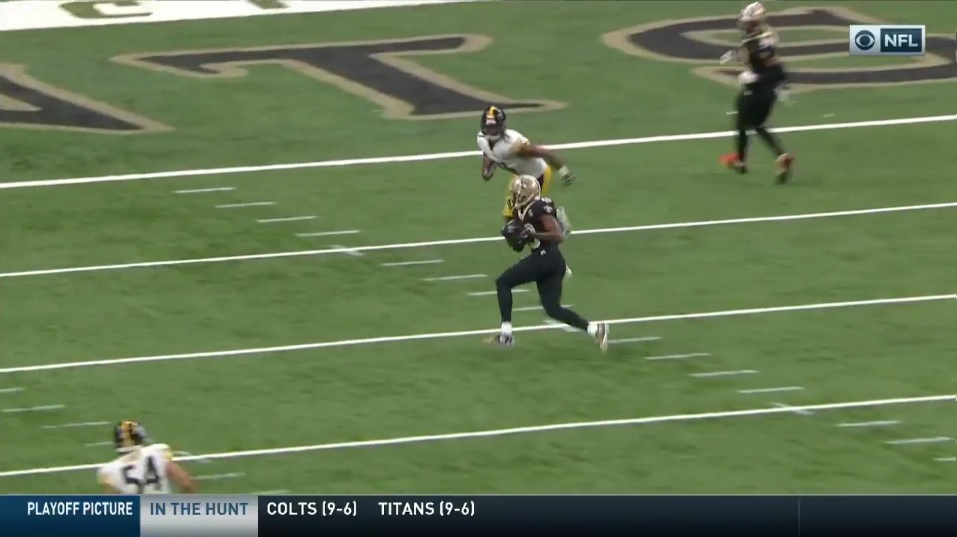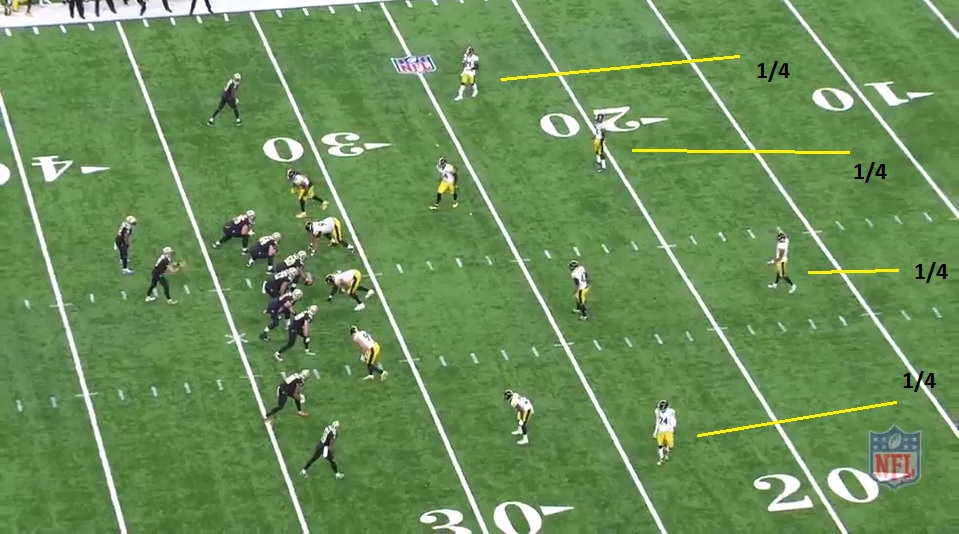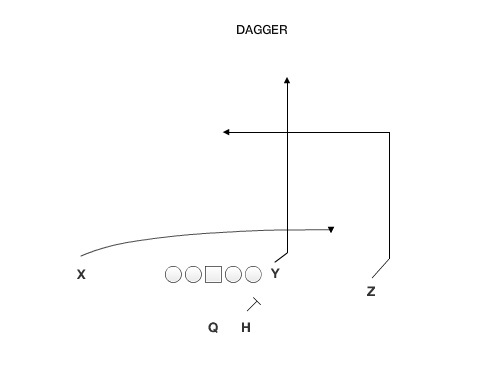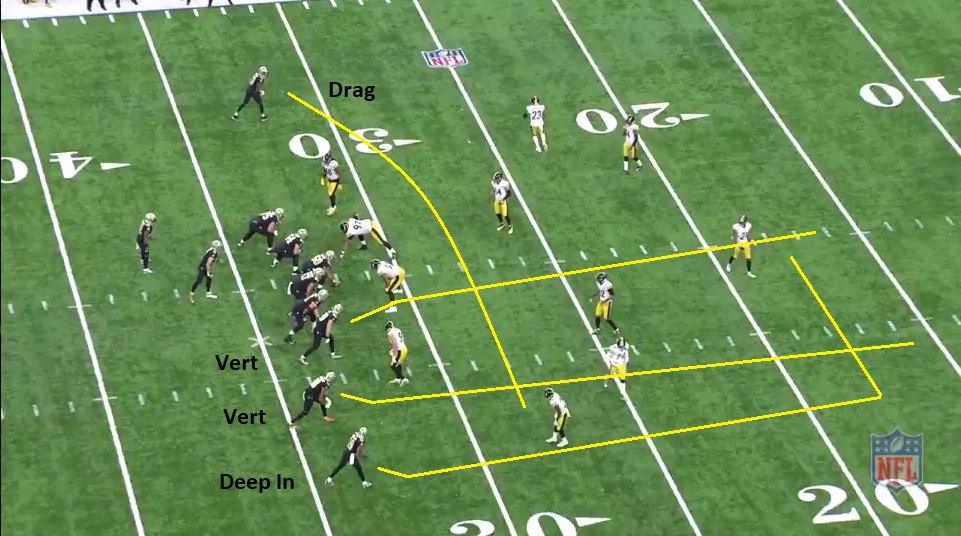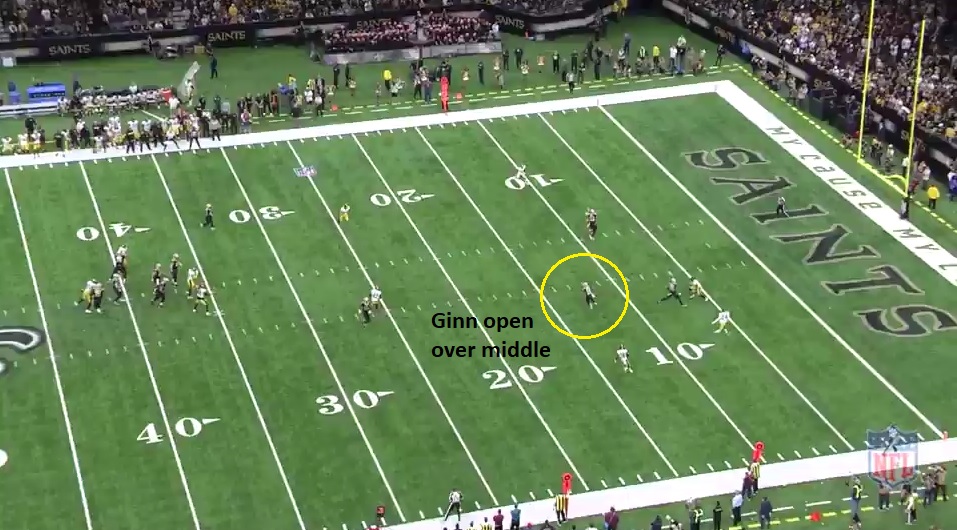3rd and 20. 1:41 left. All the Pittsburgh Steelers defense needs to do is make two more stops and they win the game, hopefully securing their playoff hopes or at least, in full control of their destiny. Drew Brees takes the snap, drops back, and finds a wide open Ted Ginn Jr. over the middle. It’s a gain of 25.
What the heck happened? How does a receiver get so wide open in an obvious, critical passing situation? Let’s take a look.
The Saints line up in a 3×1 shotgun set. Trips to the field side. Pittsburgh is in their dime package, 6 DBs on the field, bringing a four man rush and dropping seven into coverage. Keith Butler calls Cover 4, a four deep zone coverage with each man in the secondary responsible for a 1/4 of the field. Corners play the sidelines, the safeties stay tight on the hash to defend the seams. As opposed to Cover 2, where their landmark is on the numbers.
New Orleans runs a “dagger” concept. It’s a three level route consisting of a shallow crosser, a vertical route, and a deep in-breaking route. Here’s how it looks drawn up.
And here it is Sunday. They’re running #3 and #2 vertical to ensure it clears out Ginn, #1, running the dig.
Those vertical concepts clear out both safeties, forced to carry them deep, while the drive route by #1 to the top keeps Morgan Burnett from getting depth. It opens Ginn over the middle with no one to defend it.
And that’s how he got so open. The perfect call against Cover 4. Not a coverage the Steelers run too often but you do see it in these very long third downs.
As much as this play sucked and you can’t absolve the Steelers’ defense/Keith Butler/my now broken TV for this play, you can’t give up a 3rd and 20, but at least I feel like I understand it a little better now. Saints had a great playcall. They scheme better than the Steelers, something you can say about a lot of opponents this year.

